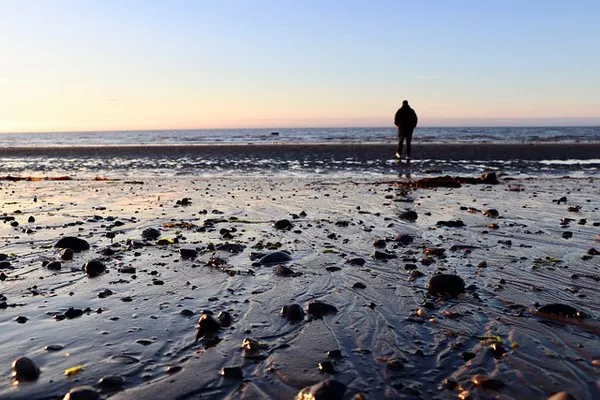Australia, known for its vibrant culture and diverse population, celebrates several public holidays throughout the year. These holidays are not only a time for relaxation and festivities but also hold cultural and historical significance for Australians nationwide. This comprehensive guide explores each public holiday in Australia, detailing their origins, traditions, and how they are celebrated across the country.
Understanding Public Holidays in Australia
Public holidays in Australia are designated by each state and territory government. While some holidays are observed nationwide, others vary depending on the state or territory. These holidays provide Australians with opportunities to commemorate events of national importance, religious significance, and cultural heritage.
National Public Holidays
New Year’s Day (January 1): Celebrated nationwide, New Year’s Day marks the beginning of the Gregorian calendar year with festivities and gatherings.
Australia Day (January 26): Commemorates the arrival of the First Fleet at Port Jackson in 1788 and the founding of the colony of New South Wales, now part of Australia. It is often celebrated with community events, fireworks, and citizenship ceremonies.
Good Friday (Friday before Easter Sunday): A significant religious holiday in Christianity, marking the crucifixion of Jesus Christ. It is observed with religious services and family gatherings.
Easter Monday (Monday after Easter Sunday): Follows Easter Sunday and extends the long weekend, often marked by outdoor activities and sports events.
Anzac Day (April 25): Honors the members of the Australian and New Zealand Army Corps (ANZAC) who fought at Gallipoli during World War I and all Australians who served and died in war and on operational service. It includes dawn services, marches, and ceremonies across the country.
Christmas Day (December 25): Celebrates the birth of Jesus Christ, observed with religious services, festive meals, and exchanging gifts.
Boxing Day (December 26): Originating in the United Kingdom, Boxing Day is a day for giving gifts to service workers and traditionally includes sports events like cricket matches and shopping sales.
State and Territory Public Holidays
In addition to national public holidays, each state and territory in Australia observes specific holidays that may reflect local history, cultural diversity, or regional significance. Some examples include:
- Labour Day: Celebrated on different dates across states and territories, Labour Day honors the contributions of workers to the nation’s economy and social development.
- Queen’s Birthday: While the actual date varies by state, this holiday celebrates the birthday of the reigning monarch of Australia, currently Queen Elizabeth II.
- Melbourne Cup Day: Observed in Victoria on the first Tuesday in November, this public holiday is known for the Melbourne Cup horse race, considered “the race that stops a nation.”
- Picnic Day: Celebrated in the Northern Territory, Picnic Day is a time for families and friends to enjoy outdoor activities and community events.
Cultural and Regional Significance
Indigenous Public Holidays
Some states and territories recognize holidays of cultural significance to Indigenous Australians, acknowledging their history, traditions, and contributions. For example:
- Naidoc Week: Celebrated in July, Naidoc Week is a time to celebrate Aboriginal and Torres Strait Islander history, culture, and achievements. It often includes community events, art exhibitions, and cultural performances.
Regional Festivals and Celebrations
Throughout the year, various festivals and events celebrate local culture, food, arts, and traditions. These events may not be public holidays but are integral to the cultural fabric of communities across Australia. Examples include:
- Sydney Festival: Held annually in January, the Sydney Festival is a major cultural event featuring theatre, dance, music, and visual arts.
- Adelaide Fringe: The Adelaide Fringe, held in February and March, is the largest arts festival in the Southern Hemisphere, showcasing a diverse range of performances and exhibitions.
Planning Your Time Around Public Holidays
Understanding public holidays in Australia is essential for planning travel, events, and business operations. Here are some tips for navigating public holidays effectively:
- Check State and Territory Differences: Be aware of regional variations in public holidays, especially if traveling across different states or territories.
- Plan Early: Public holidays are popular times for travel and events, so book accommodations and tickets well in advance.
- Respect Local Customs: Participate in local celebrations and respect cultural traditions associated with public holidays.
- Business Considerations: Businesses may have varied operating hours or closures during public holidays, so plan accordingly for services and supplies.
See also: What’s Australia’s Most Important Public Holiday
Conclusion
Public holidays in Australia are more than just days off; they are opportunities to celebrate, reflect, and connect with the nation’s rich history and cultural diversity. Whether you’re enjoying a BBQ on Australia Day, commemorating Anzac Day at dawn services, or taking part in local festivities, these holidays play a significant role in Australian life. By understanding the origins and traditions of each holiday, both residents and visitors can fully appreciate the spirit of Australia’s public celebrations throughout the year.
By following this guide, you can navigate the public holidays of Australia with confidence, ensuring you make the most of these special days in the Australian calendar.

